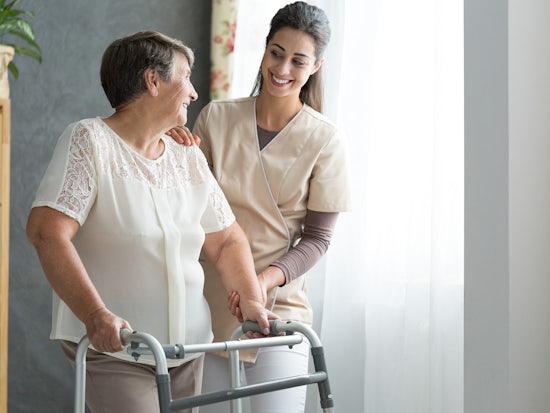Seniors show they have mixed views on aged care at home
The opinions and experiences of home care recipients have been researched, revealed and will soon be reviewed as part of a new report commissioned as part of the Federal Government’s new Aged Care Workforce Strategy Taskforce.

“We need to listen to consumers, address the negatives and get this right.” (Source: Shutterstock)
Led by peak body for seniors National Seniors, the report: Accentuating the positive: consumer experiences of aged care at home, asked consumers for their opinions of the aged care services offered in their homes, and found that while most seniors receiving aged care at home thought workers treated them with respect, met their personal care and support needs, and were well trained, around 50 percent also said better coordination between home care and health services was required, along with improvements to the Consumer Directed Care system.
Taskforce Chair Professor John Pollaers says the report findings would help build a comprehensive and sustainable Workforce Strategy for the industry, and in doing so, improve the quality of life of aged care consumers.
“In a time of change, listening to expressions of both positive and negative views on home support and home care is the key to creating better services in the future,” Professor Pollaers says.
“The consumer voice needs to be the driver for changes in the industry as ‘ageing in place’ becomes increasingly the norm.
“It is important that elderly Australians are able to live well and feel empowered.”
Report author, National Seniors Australia Research Director Professor John McCallum, says while the report noted a strong agreement among respondents that aged care workers treat the household with respect, know what they are doing and are well trained, it was also important to listen to negative views to target areas for improvement.
“People complained about services being delivered at times or in ways that were inconvenient to the client; a lack of continuity of care for dementia patients; and poor training for dementia care,” he says.
“They also expressed frustration caused by Workplace Health and Safety constraints on cleaning, and poor cleaning services generally; waiting too long to be assessed, and having to accept a lower level package until a higher one became available; poor communication from providers; and poor administration of services generally.”
Professor McCallum says action is needed to address the deficiencies highlighted by the consumers in the report, especially because rapid growth is expected in demand for aged care services delivered at home.
He adds that several training initiatives could be considered to improve outcomes, including training for informal carers, mandated courses and qualifications for personal care workers and care managers, increased access to short courses for ongoing skill development, and more targeted on-the-job training.
“What’s needed is to turn the negatives into positives with better training and management,” he explains.
“This is a high priority because home delivered services are the future of aged care.
“We need to listen to consumers, address the negatives and get this right.”
Seniors accessing home care weren’t the only ones to share their recommended areas of improvement, with informal carers also becoming involved.
The report highlights that these informal carers had “multiple issues” including the need for better access to respite care; opportunities for training; physical health impacts; stress, mental exhaustion and feeling overwhelmed; loss of income; and difficulties coping with family dynamics.
Professor McCallum voiced “major concerns” that more than 40 percent of family members and others providing unpaid care said their health was affected by caring duties, saying that there is a “need to recognise that this family care workforce is a major part of the service system and support them properly”.























